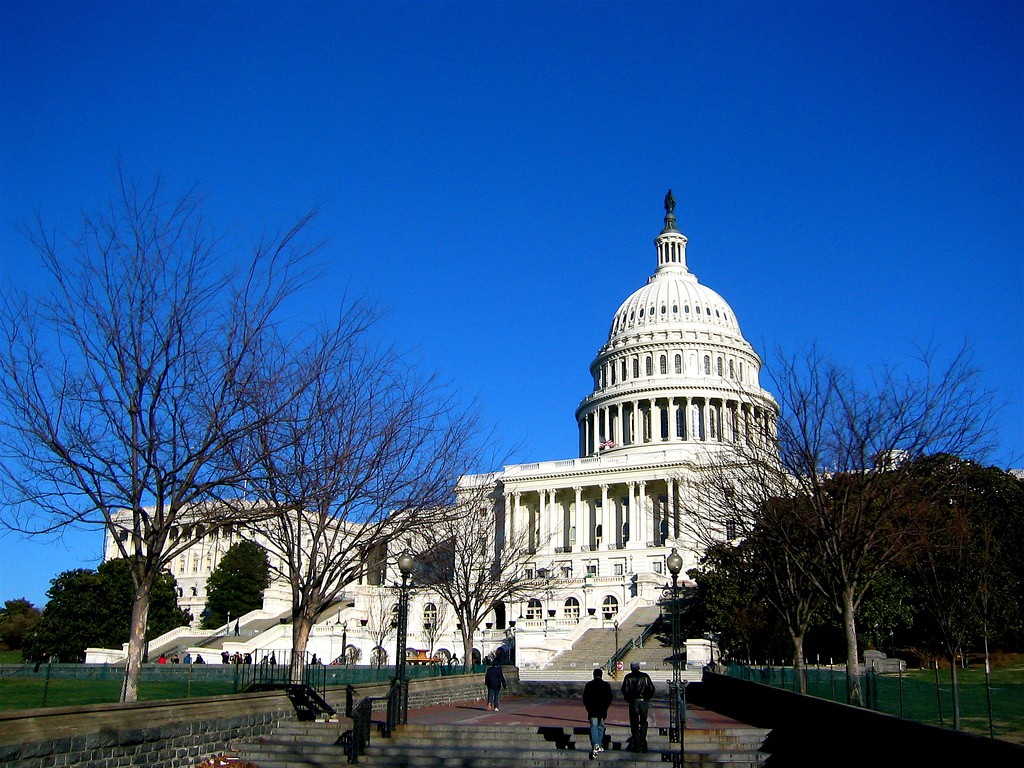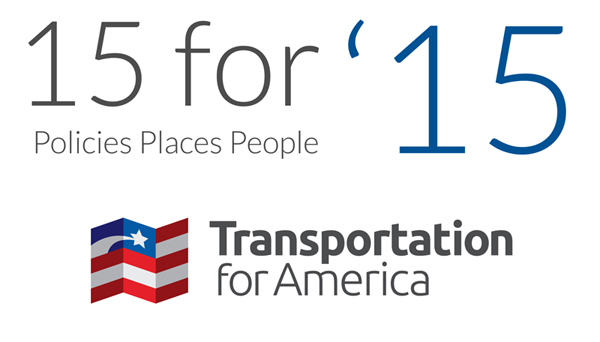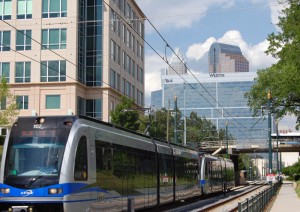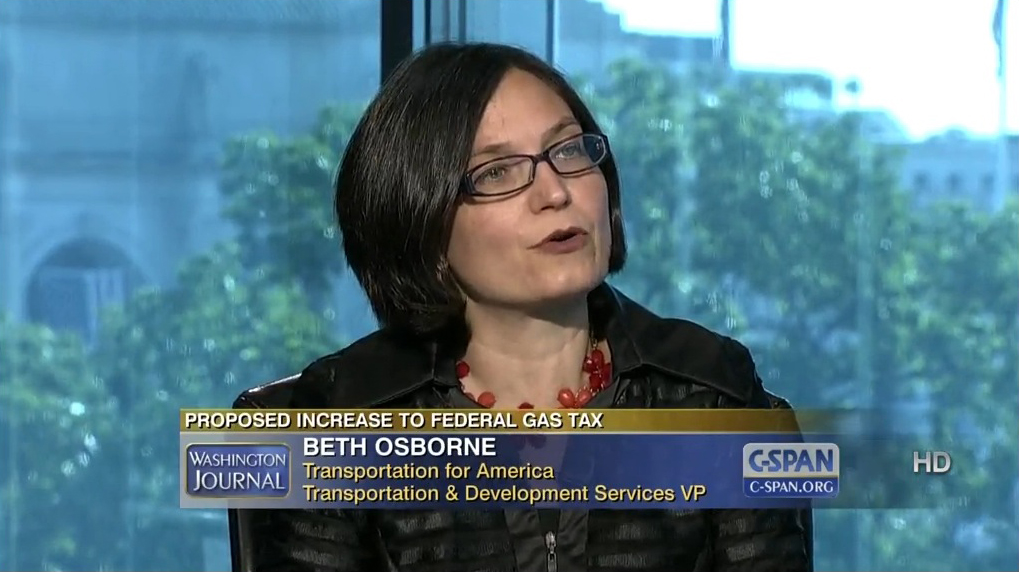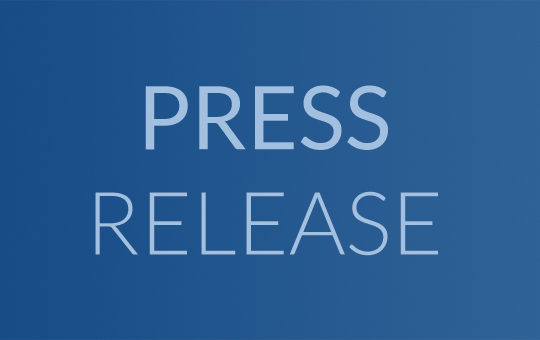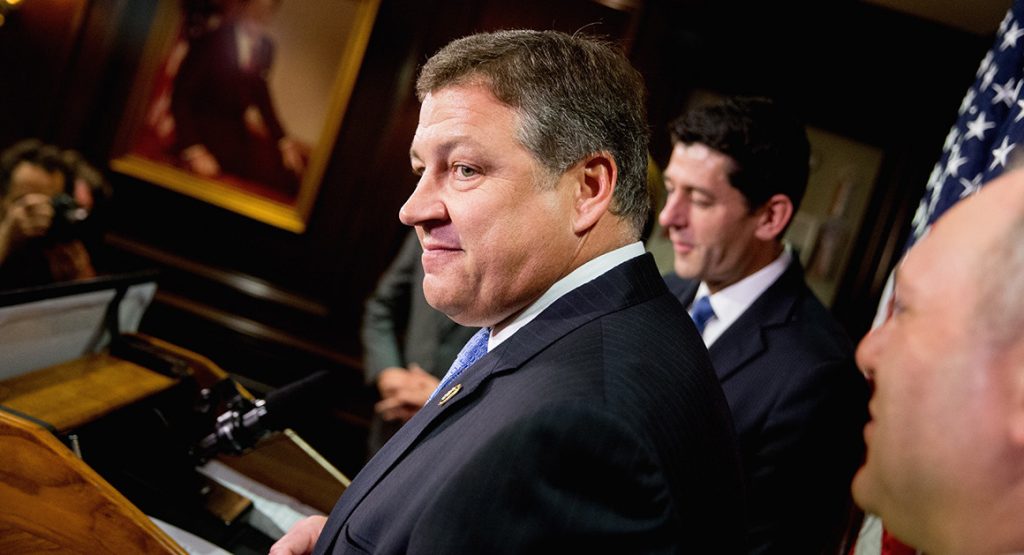
 On Monday, July 23, the Chairman of the House Transportation and Infrastructure Committee, Bill Shuster, released his proposal to reform transportation investment. While there are some novel ideas in the proposal, it ultimately scores a 50 percent based on our four guiding principles for infrastructure investment.
On Monday, July 23, the Chairman of the House Transportation and Infrastructure Committee, Bill Shuster, released his proposal to reform transportation investment. While there are some novel ideas in the proposal, it ultimately scores a 50 percent based on our four guiding principles for infrastructure investment.
Local governments and millions of Americans are counting on the federal government to be a partner in rebuilding our transportation infrastructure. In November 2017, Transportation for America released a set of four simple principles to inform and evaluate any potential plans for federal infrastructure investment. The Chairman’s proposal is a serious one, and should be commended for being the first proposal with real funding in more than a decade, advancing the national conversation about our infrastructure. However, on the policy, it fails to meet our four principles.
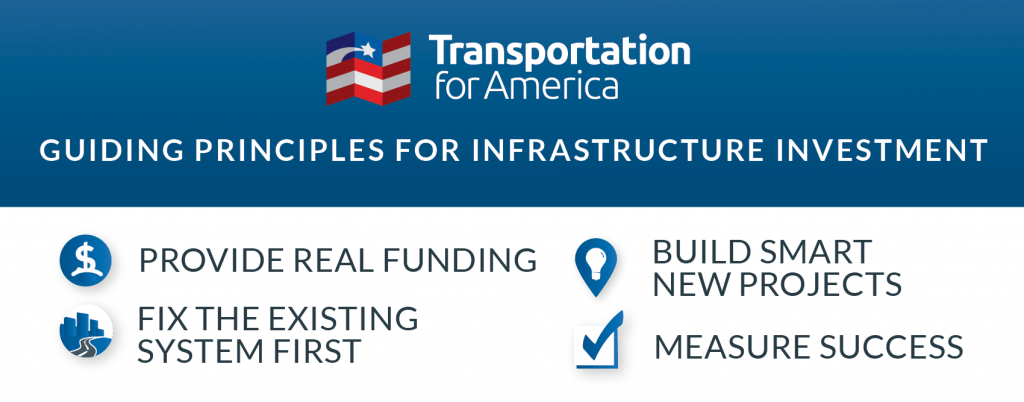
How the proposal measures up to our principles
Provide real funding
We need real federal funding, not just new ways to borrow money or sell off public assets to support transportation investments.
The Chairman’s proposal addresses our infrastructure funding deficit through new short term revenue sources and a Highway Trust Fund Commission. While the proposal ultimately eliminates the gas tax, the proposed short-term fixes would include new/steeper taxes on bikes and transit (which we have concerns about). The gas tax would be replaced by a new revenue source (such as a mileage-based fee/road user charge) identified by the Commission. While we believe this proposal generally holds the promise of providing real funding. and we look forward to working together to advance this shared goal.
Fix the existing system first
We must immediately fix the system we have and fund needed repairs to aging infrastructure.
The Chairman’s proposal does not prioritize maintenance over other investment. The proposal creates a vehicle miles traveled tax pilot with a goal to “steadily reduce the state of good repair backlog in surface transportation.” This is a commendable goal, however it cannot be achieved by a funding source. Addressing the state of good repair backlog requires policy makers to set this as a priority and to dedicate available funding for this purpose. This proposal, like the current program, fails to do that.
Build smart new projects
Our current approach, largely driven by formula funding, is necessary to ensure baseline investments, but funding that flows automatically for specified purposes does not encourage innovation or flexible action.
The Chairman’s proposal holds the promise of meeting this principle. Through three proposed programs—national infrastructure investments grants, incentive grants, and projects of national significance—the proposal increases the amount of funding distributed through competition. Competition is an effective way to identify the projects that bring the greatest benefits for the investment.
Measure success
Infrastructure investments are a means to foster economic development and improve access to jobs and opportunity for all Americans.
Unfortunately, the Chairman’s proposal fails to ensure that communities measure the success of their investments or connects what they measure to their investment decisions. Congress started a performance measures framework in MAP-21; however, those measures miss major community priorities (like improving access to work) and fail to connect results to funding and thus lack real accountability.
Our four principles cannot be considered independently of each other. Well crafted programs that are underfunded miss the mark. More money spent ineffectively is certainly not the point. Bringing our infrastructure up to a state of good repair requires both real funding and refocusing the program on maintenance (as opposed to expanding out the highway system).
While Chairman Shuster is the first to propose real funding in quite some time and we thank him for providing real leadership, we can not just spend our way to our goals without other reforms. The proposal therefore scores only a 50 percent, far from a passing grade in the classroom or for something as long-lasting as infrastructure.
We appreciate the chairman’s thoughtfulness and determination and we look forward to working together to ensure that future proposals ultimately spend taxpayer money wisely.








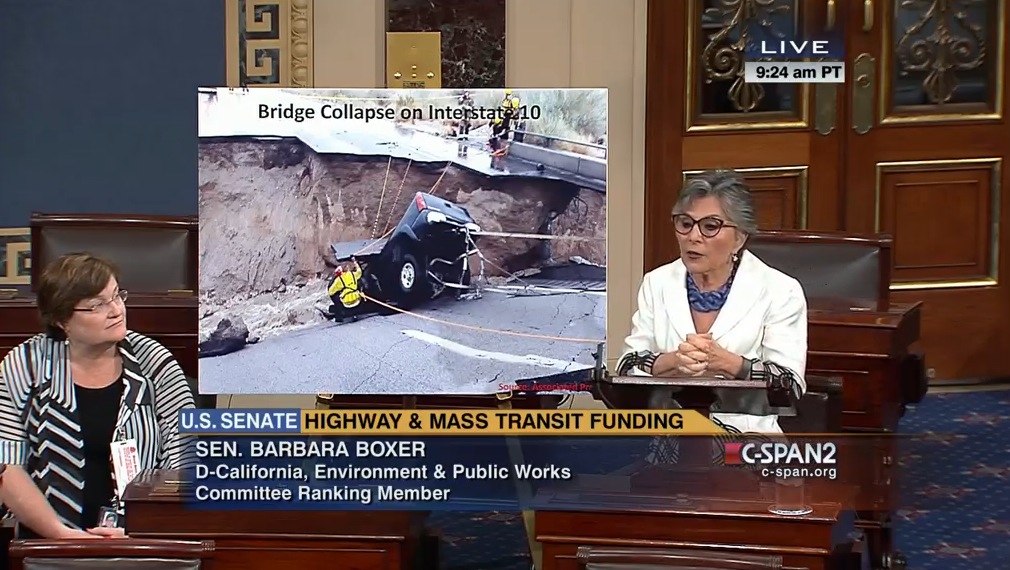
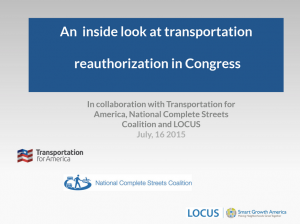
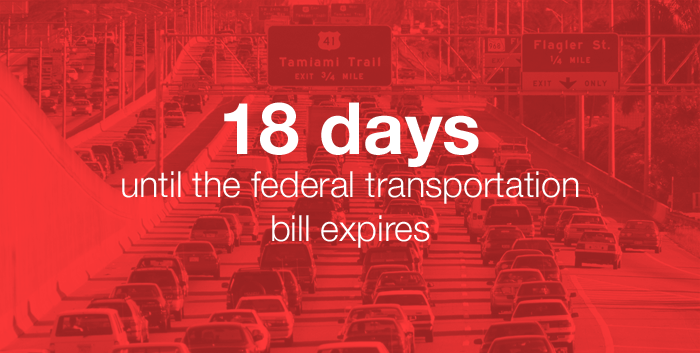

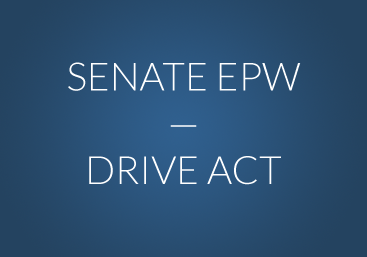 June 24, 2015 — The Senate Environment and Public Works Committee (EPW) released its six-year MAP-21 reauthorization proposal on June 22, 2015. The DRIVE Act is a start, but needs much more work to reform — and reinvigorate — the federal transportation program in ways that will boost today’s economy and ensure future prosperity. This memo provides an overview of the key provisions included in the proposal, as well as funding levels for key programs.
June 24, 2015 — The Senate Environment and Public Works Committee (EPW) released its six-year MAP-21 reauthorization proposal on June 22, 2015. The DRIVE Act is a start, but needs much more work to reform — and reinvigorate — the federal transportation program in ways that will boost today’s economy and ensure future prosperity. This memo provides an overview of the key provisions included in the proposal, as well as funding levels for key programs.